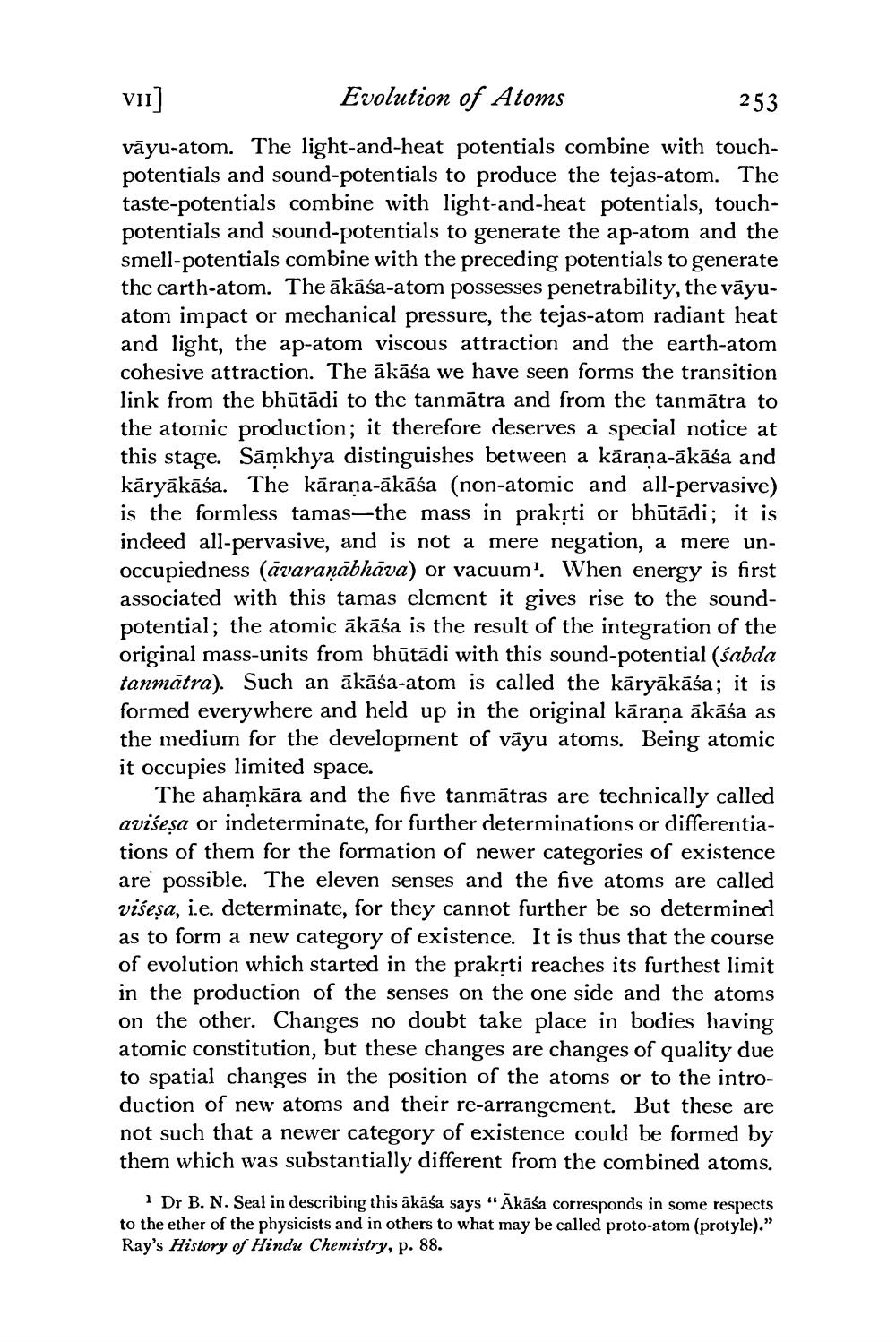________________
vii] Evolution of Atoms
253 vāyu-atom. The light-and-heat potentials combine with touchpotentials and sound-potentials to produce the tejas-atom. The taste-potentials combine with light-and-heat potentials, touchpotentials and sound-potentials to generate the ap-atom and the smell-potentials combine with the preceding potentials to generate the earth-atom. The ākāśa-atom possesses penetrability, the vãyuatom impact or mechanical pressure, the tejas-atom radiant heat and light, the ap-atom viscous attraction and the earth-atom cohesive attraction. The ākāśa we have seen forms the transition link from the bhūtādi to the tanmātra and from the tanmātra to the atomic production; it therefore deserves a special notice at this stage. Sāmkhya distinguishes between a kāraṇa-ākāśa and kāryākāśa. The kārana-ākāśa (non-atomic and all-pervasive) is the formless tamas—the mass in praksti or bhūtādi; it is indeed all-pervasive, and is not a mere negation, a mere unoccupiedness (āvaraņābhāva) or vacuum! When energy is first associated with this tamas element it gives rise to the soundpotential; the atomic ākāśa is the result of the integration of the original mass-units from bhūtādi with this sound-potential (sabda tanmātra). Such an ākāśa-atom is called the kāryākāśa; it is formed everywhere and held up in the original kārana ākāśa as the medium for the development of vāyu atoms. Being atomic it occupies limited space.
The ahamkāra and the five tanmātras are technically called avisesa or indeterminate, for further determinations or differentiations of them for the formation of newer categories of existence are possible. The eleven senses and the five atoms are called višesa, i.e. determinate, for they cannot further be so determined as to form a new category of existence. It is thus that the course of evolution which started in the prakrti reaches its furthest limit in the production of the senses on the one side and the atoms on the other. Changes no doubt take place in bodies having atomic constitution, but these changes are changes of quality due to spatial changes in the position of the atoms or to the introduction of new atoms and their re-arrangement. But these are not such that a newer category of existence could be formed by them which was substantially different from the combined atoms.
i Dr B. N. Seal in describing this ākāśa says "Ākāśa corresponds in some respects to the ether of the physicists and in others to what may be called proto-atom (protyle)." Ray's History of Hindu Chemistry, p. 88.




